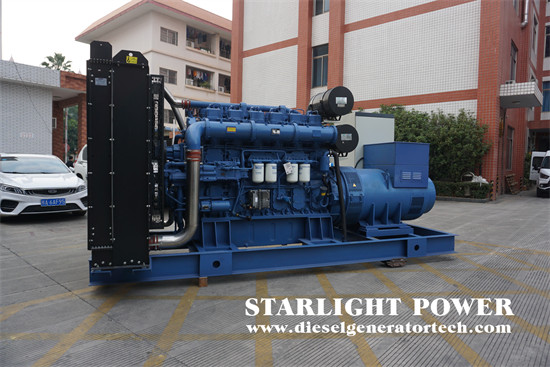Under normal circumstances, when the generator is no-load, there is only one synchronously rotating rotor magnetic field, that is, the excitation magnetic field, which induces a three-phase symmetrical potential in the armature winding, called the excitation potential Eo. Press U=Eo. However, the situation is different when the generator stator is connected to the armature magnetomotive force and the two-phase load of the coffin is magnetically symmetrical. At this time, the load current generates a second magnetic potential, which interacts with the excitation magnetic potential to form a combined magnetic potential in the air gap under load and establishes the air gap magnetic field under load. At this time, although the excitation current has not changed, the air gap magnetic field is different from the original excitation magnetic field, so the induced potential in the current air gap is no longer Eo, and it can be seen from subsequent analysis that the terminal voltage U at this time is also obvious different from Eo, among the factors that U is different from E, the decisive role is the influence of the armature magnetic potential, which is referred to as the armature reaction when the load is symmetrical.

Neither the rotor magnetic field nor the armature magnetic field are stationary, so the motion relationship between them must be figured out first. The rotation speed n1 of the armature magnetic field is generated by the current of frequency f flowing in the stator winding, and a rotating magnetic field of p opposite poles is formed in the stator winding of the diesel generator. The relationship between them is: n1=60f/p. The rotational speed n of the rotor is determined according to the requirement that the frequency of the rotor magnetic potential in the stator winding (thereby generating the current) should be f, and the number of pole pairs of the rotor is equal to the number of pole pairs of the stator, so the prime mover should be drag the generator rotor speed to n and let n=n1.
This shows that the rotational speed of the magnetomotive force of the armature fundamental wave is equal to the rotational speed of the rotor magnetic potential. In addition, since the steering of the fundamental wave of the armature magnetomotive force thus generated is determined by the phase sequence of the armature three-phase current, which in turn is determined by the rotation direction of the rotor magnetic potential, it is not difficult to see that the steering of the fundamental wave of the armature magnetomotive force must be consistent with the rotation of the rotor. It can be seen that the fundamental wave of the armature magnetic potential and the fundamental wave of the rotor magnetic potential have the same direction and the same speed, and the two are in a relatively static state in spatial position, that is to say, the combined result of the two magnetic fields does not change with time. , is the same at any instant, so any instant can be selected for analysis when analyzing the armature reaction.
It is precisely because of this relative static that the generator can generate a stable air-gap magnetic field and an average electromagnetic torque to realize electromechanical energy conversion. In fact, this is also the basic condition for the normal operation of all electromagnetic induction rotating generators. The nature of the armature reaction (magnetizing, demagnetizing, or alternating) depends on the spatial relative position of the fundamental wave of the armature magnetomotive force and the fundamental wave of the exciting magnetomotive force. The analysis shows that this relative position is related to the phase difference between the excitation potential Eo and the armature current T, that is, the angle ψ (ψ is called the internal power factor angle). The analysis assumes that the air gap is uniform and that both the space vector and the time phasor are fundamental sine quantities.
As a professional diesel generator manufacturer, we always insist on using first-class talents to build a first-class enterprise, create first-class products, create first-class services, and strive to build a first-class domestic enterprise. If you would like to get more information welcome to contact us via [email protected].
Copyright © Guangxi Dingbo Generator Set Manufacturing Co., Ltd. All Rights Reserved | Sitemap
Update cookies preferences